While putting together my previous post about movie posters, scratching my head and trying to remember who did what, I admit that I found myself feeling more than a little nostalgic about the work of Frank McCarthy. I mean, if you were standing in front of a theater the man’s posters literally leaped out, grabbed you by the lapels, and yelled, “Look! You want excitement? Here it is, kid!”

Above: One of the posters for Thunderball (1965). This art was licensed as a jigsaw puzzle, which I carefully put together, glued to a piece of poster board, and hung on my bedroom wall.
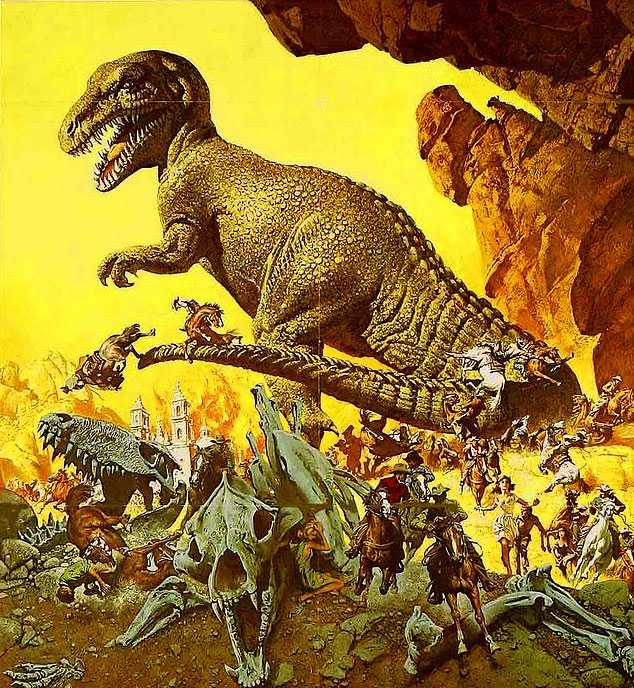
Above: Yep, it’s the original art for The Dirty Dozen poster that was sold via Heritage. Original poster art—despite there being a lot of it created through the years—is generally pretty difficult to come by.
Above: Looking a little worse for wear, the original poster art for Flight From Ashiya starring Yul Brynner (I’d never heard of the 1964 movie before stumbling across this scan).
Above: The original painting for Von Ryan’s Express.
Frank McCarthy was born in New York in 1924, studied under George Bridgeman at the Art Students League and attended the Pratt Institute in Brooklyn. He began freelancing in 1948—and, as I mentioned in my previous post, shared a studio with Bob Peak and Robert McGinnis—and created illustrations for Colliers, Argosy, and True magazines, numerous book covers, and, of course, a stack of memorable film posters. A meticulous craftsman, McCarthy rarely hesitated to give an honest opinion of works by his contemporaries; a comment to Frank Frazetta about “Death Dealer” during a Society of Illustrators dinner still had Frazetta seething three decades later.


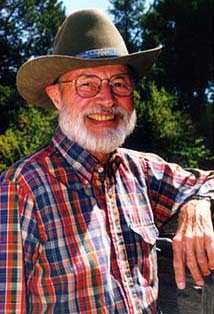
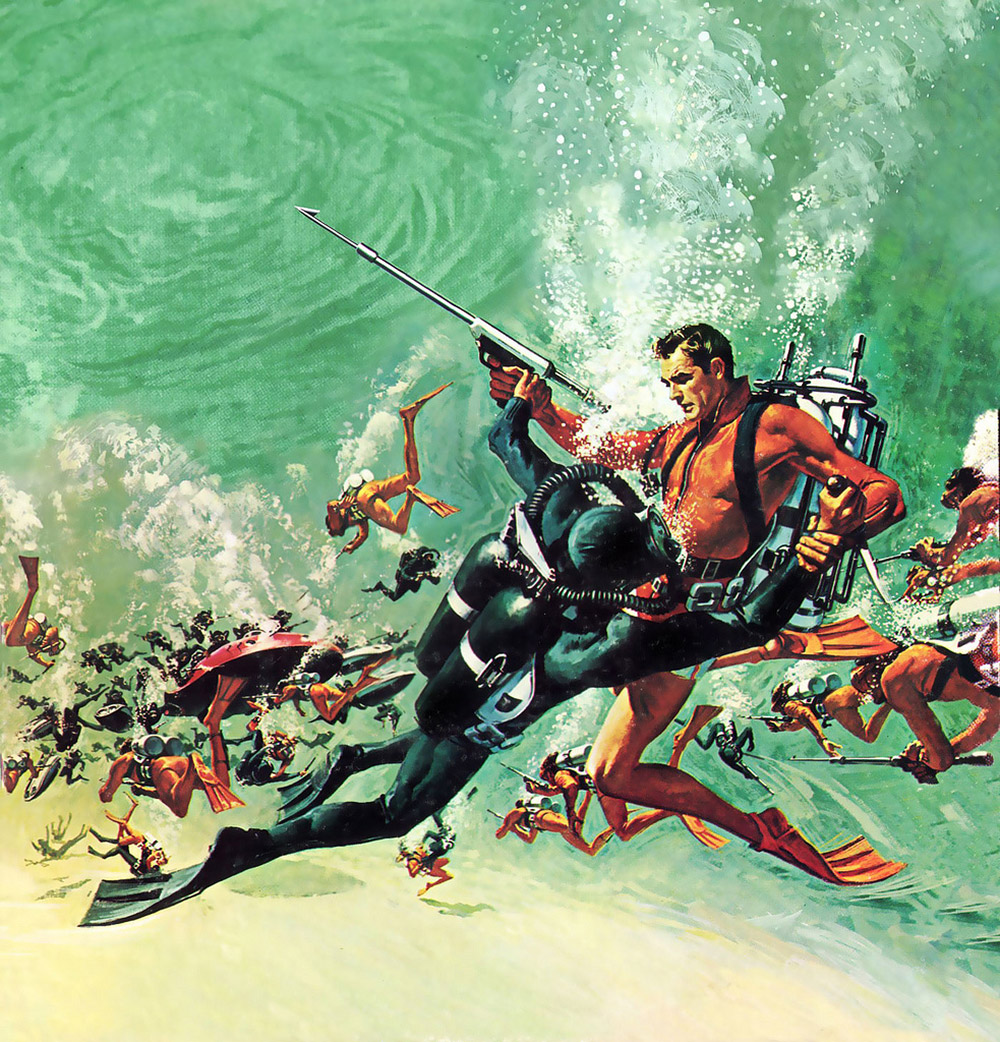
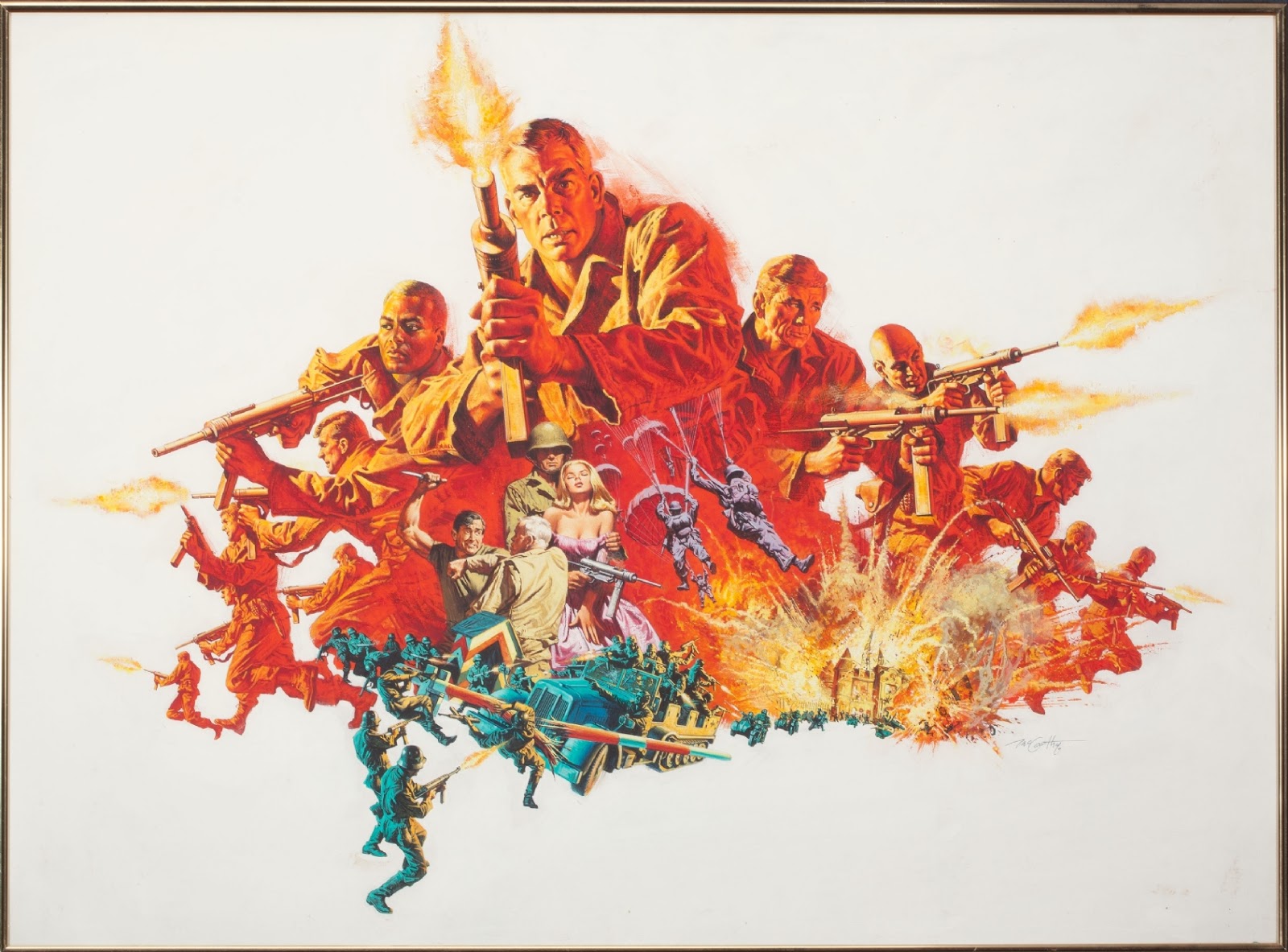
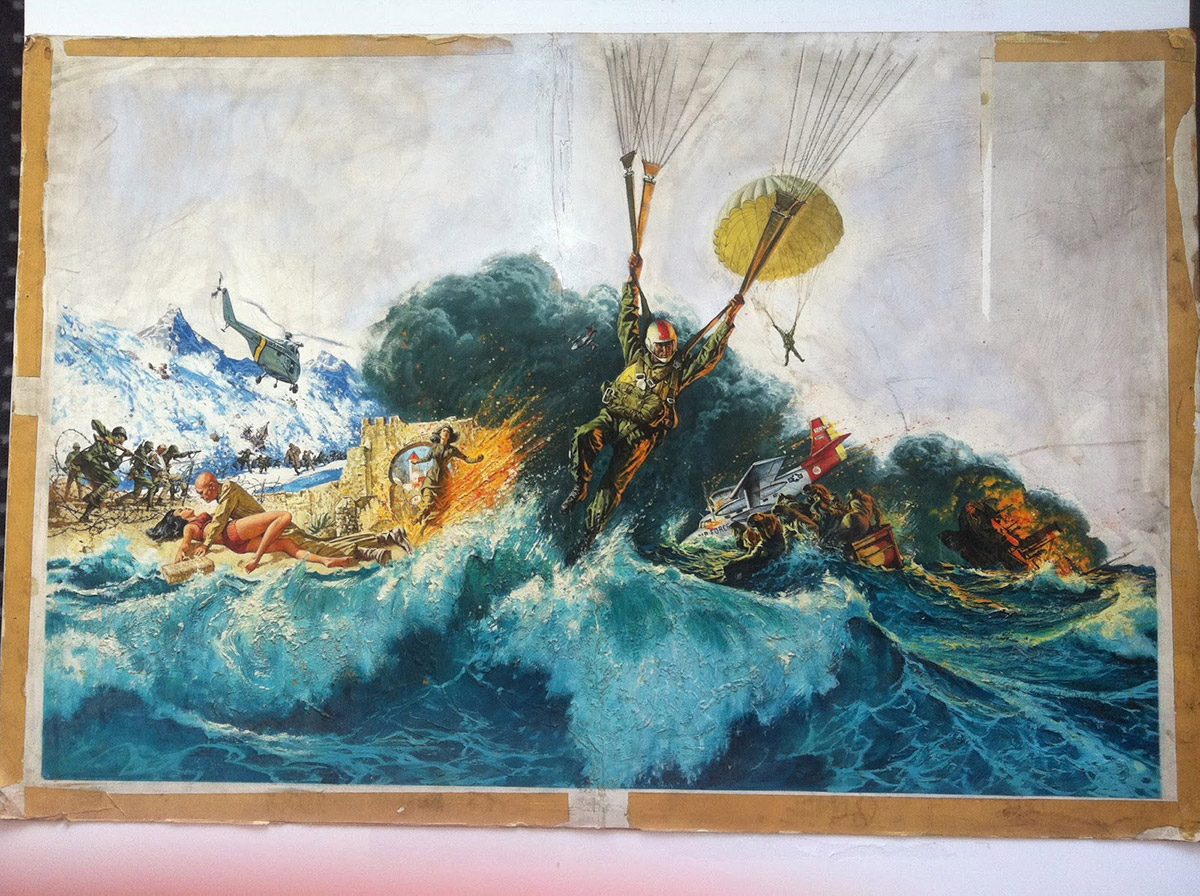
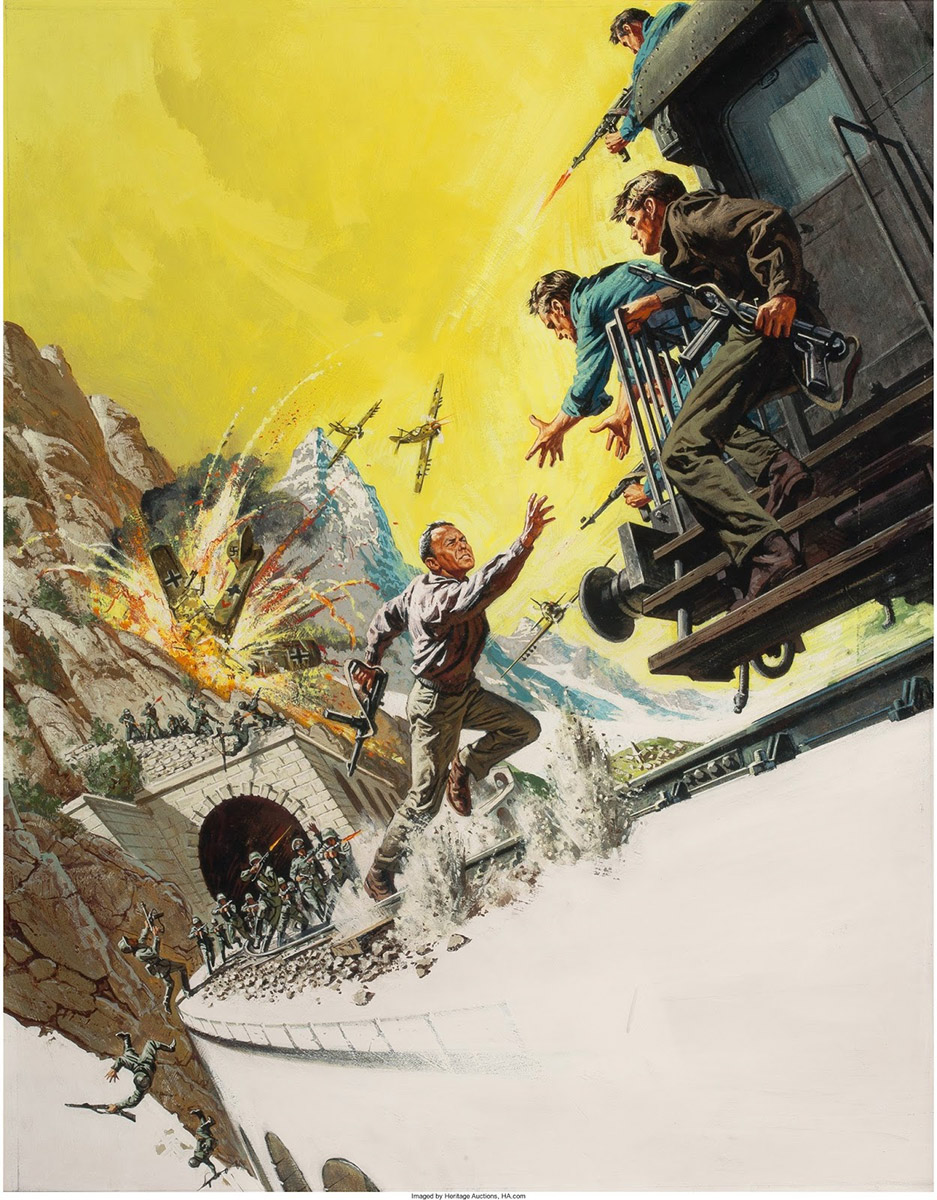
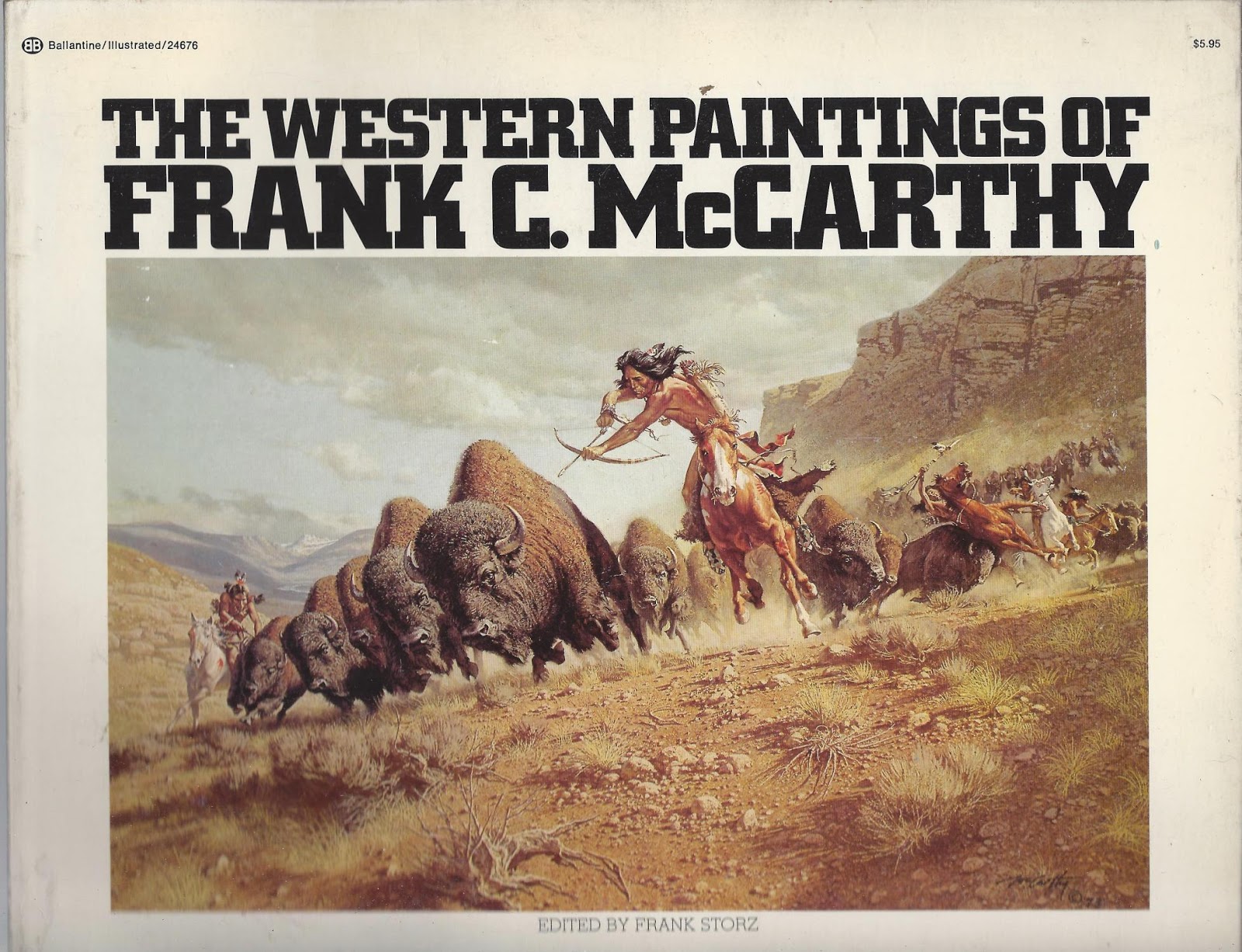
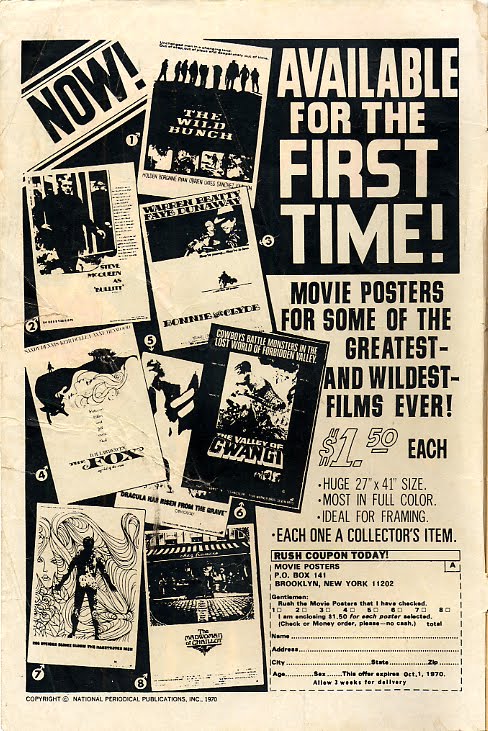


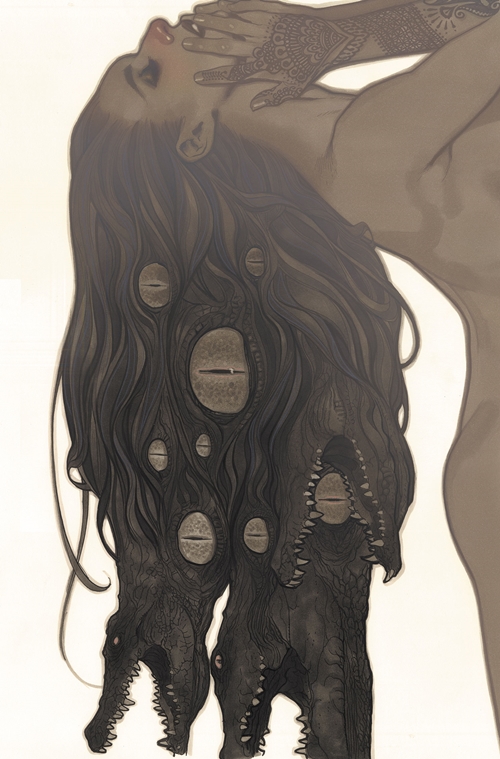
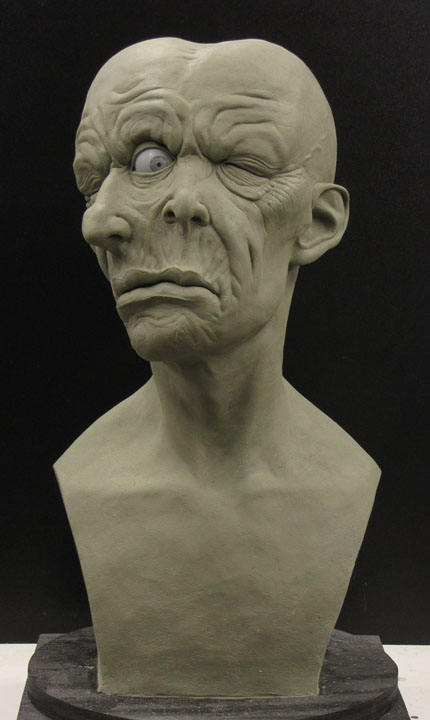
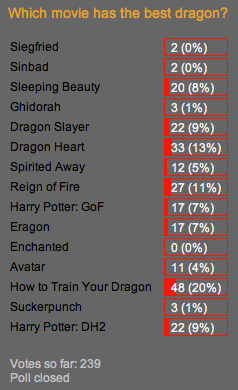
That Thunderball cover was the first LP I ever owned… my mother bought it for me from a $2 sale bin near the checkout of some now-defunct 70's store like Kress or Woolco. I dropped the record down into our cabinet Hi-Fi and let John Barry school my ears as I pored wide-eyed over every little detail of McCarthy's artwork…
The LP is still around here, somewhere… thanks, Mom, and thanks, Frank!
The Valley of Gwangi – CLASSIC movie, CLASSIC movie poster. I didn't realize who had done it, but as a kid I remember it being one of the most iconic allosaurs ever. Thanks for posting this, Arnie!
Man Arnie, you continue to push my nostalgia buttons. Thunderball to this day is my favorite Bond movie and I had that poster. Wish I knew what happened to it.
It's unfortunate that Frank's illustration work isn't better documented. The volume of his work thatI have only lightly touches on it, focusing mostly on his western work (which is eye popping). I have to say that The Valley of Gwangi poster is better than the movie, though by B-movie dinosaur flick standards, it's one of the best. The Ray Harryhausen effects make it worth a watch, but the poster is stunning!
I know I'd buy a book on his illustration work if Cathy and Arnie Fenner did one!
I have recollections of seeing his movie posters too. These here must be his illustration work sans the poster format and type. Is it reproduced anywhere in that format?
Also what WAS the comment he made to Frazetta? Do you know?
Frank McCarthy did the GWANGI movie poster artwork?! One of my favorite movie posters ever, and it was also the artwork used for the comic book adaptation of the film which was where I first saw it. Sadly the movie wasn't as good as the poster art. I wanted to see those cowboys flying off the dinosaurs tail! Now that you say it, Arnie, it's clear as can be that it's Frank McCarthy's work. I'd just never realized it until now.
Didn't Robert McGinnis do some poster work for THUNDERBALL as well?
Oh, yes, and I'd also love to know what Mr. McCarthy said that ticked Frazetta off.
David–
I've still got the album, too! And I'm still trying to figure out what a “Thunderball” is…
Lars & Greg–
Frank made Gwangi the size of Gorgo or Godzilla, but, boy, I loved that poster. Funny, the company that was selling the posters in the backs of the comics were also offering ones for DRACULA HAS RISEN FROM THE GRAVE and THE FOX (based on the D.H. Lawrence novel) featuring by Leo and Diane Dillon.
Bill–
Don't look for it: I'VE got your poster hanging on the office wall!! (Actually, it's just a repro and you probably had the Real McCoy, but still…)
David–
Other than the handful of examples that were included in McCarthy's Western book (as Greg mentions), the vast majority of his illustration work is uncollected and largely undocumented, though I'm sure the posters turn up in various film books from time to time. And, of course, the posters themselves come up for sale regularly. You can visit this site, for example, to see the various GWANGI poster treatments:
http://www.moviegoods.com/movie_poster/the_valley_of_gwangi_1969.htm
Simon–
I'd be happier if someone ELSE did it so that we could just buy it and read it!
Aaron–
You're correct: Robert McGinnis did THUNDERBALL 3 (I think) full posters (one wasn't used) and the art was also combined with McCarthy's art for various campaigns. As Bob has said, he did the posters featuring the Bond women while Frank did the big action scenes. McGinnis also painted the iconic Connery standing pose with leg crossed and gun-in-hand. (I've never seen a repro anywhere of the entire McCarthy painting in which Bond is taking off with the jetpack, only a cropped version on one of the posters.)
As far as what Frank said to Frank…let's just say that, verbally, McCarthy was much faster on the draw and his shots were always on the mark. For McCarthy's part, he probably forgot about it immediately (it really was only a brief exchange); Frazetta, on the other hand, carried something of a grudge the rest of his life. I think if they had talked again later in life, they would've gotten along fine. Maybe.
So what exactly did McCarthy say to Frazetta? Did he criticize his horse?
He was criticizing the horse and the proportion and position of Death Dealer.
Thanks for the response. I see his points, but would never think of saying that to someone at an awards dinner. McCarthy must have been an outspoken guy.
Both were great at what they did regardless….
McCarthy had a reputation for being blunt, not mean but direct. He was talking to other artists about the painting; Frazetta overheard part of the conversation, instigated the exchange (because he could be blunt, too), and ultimately regretted it. But I heartily agree: both were indeed great at what they did.